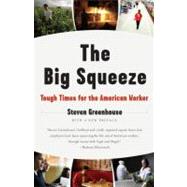
Note: Supplemental materials are not guaranteed with Rental or Used book purchases.
Purchase Benefits
What is included with this book?
| Preface to the Anchor Books Edition | p. xi |
| Introduction | p. xv |
| Worked Over and Overworked | p. 3 |
| Workplace Hell | p. 15 |
| The Vise Tightens | p. 35 |
| Downright Dickensian | p. 49 |
| The Rise and Fall of the Social Contract | p. 71 |
| Leaner and Meaner | p. 98 |
| Here Today, Gone Tomorrow | p. 117 |
| Wal-Mart, the Low-Wage Colossus | p. 135 |
| Taking the High Road | p. 158 |
| Overstressed and Overstretched | p. 184 |
| Outsourced and Out of Luck | p. 199 |
| The Lowest Rung | p. 221 |
| The State of the Unions | p. 241 |
| Starting Out Means a Steeper Climb | p. 263 |
| The Not-So-Golden Years | p. 276 |
| Lifting All Boats | p. 289 |
| Acknowledgments | p. 305 |
| Notes | p. 307 |
| Index | p. 347 |
| Table of Contents provided by Ingram. All Rights Reserved. |
The New copy of this book will include any supplemental materials advertised. Please check the title of the book to determine if it should include any access cards, study guides, lab manuals, CDs, etc.
The Used, Rental and eBook copies of this book are not guaranteed to include any supplemental materials. Typically, only the book itself is included. This is true even if the title states it includes any access cards, study guides, lab manuals, CDs, etc.
Excerpted from The Big Squeeze: Tough Times for the American Worker by Steven Greenhouse
All rights reserved by the original copyright owners. Excerpts are provided for display purposes only and may not be reproduced, reprinted or distributed without the written permission of the publisher.